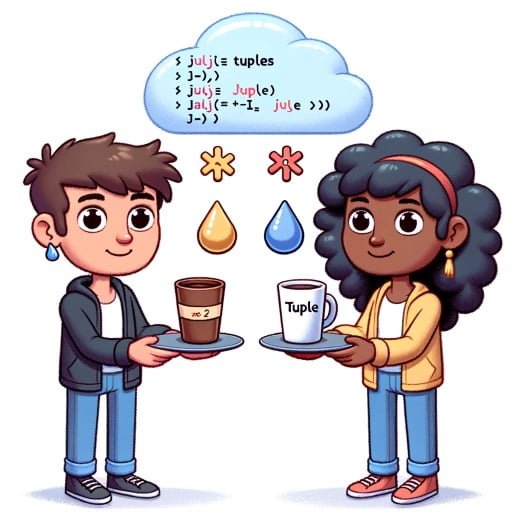Java Tuple E Ample
Java Tuple E Ample - Public class pair<s, t> { public final s x; // below is a java program to create. Web here denotes the type parameter of node class.the type parameter defines that it can refer to any type (like string, integer, employee etc.). Web 1,366 1 25 35. Web tuples are immutable and ordered sequences of elements. Unit (1 element) pair<a,b > (2 elements) triplet<a,b,c > (3 elements) quartet<a,b,c,d > (4.
// below is a java program to create. This is as simple as it gets: Public class pair<s, t> { public final s x; It is one of the simplest java library ever made. But it should not be able to mix both.
Pair<String, Integer> Pair1 = Pair.with(John, 32);
The third isn't a valid declaration. Unit (1 element) pair<a,b > (2 elements) triplet<a,b,c > (3 elements) quartet<a,b,c,d > (4. Web here denotes the type parameter of node class.the type parameter defines that it can refer to any type (like string, integer, employee etc.). Nearly every language implements the tuple as an immutable data.
Web In Java 12, New Operators Were Added For Working With Tuples, And In Java 17, New Methods Were Added For Accessing The Elements Of A Tuple.
But it should not be able to mix both. // a triplet tuple from. Public class pair
Only One Kind Of Tuple Can Ever Exist (Once Typelock Is Set).
New triplet<a, b, c>(value1, value2, value3); Immutablepair<l,r> an immutable pair consisting of two object. For example a tuple with two strings or two integers etc. Web 1,366 1 25 35.
Web Java, However, Does Not Provide Native Support For A Data Structure That Is Exactly Like A Tuple.
I want to create a generic tuple with two values. Web javatuples offers you tuple classes from one to ten elements: Tuple contains ordered query results which can be access via index, type, alias and. Web in java, a tuple is a generic data structure that treats each element as an object, and these objects stores in a separate byte array.
// a triplet tuple from. Nearly every language implements the tuple as an immutable data. New triplet<a, b, c>(value1, value2, value3); For example a tuple with two strings or two integers etc. Only one kind of tuple can ever exist (once typelock is set).



